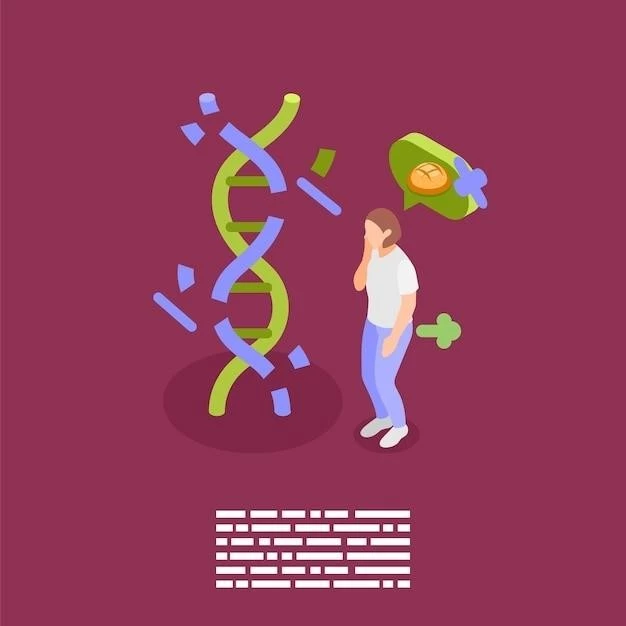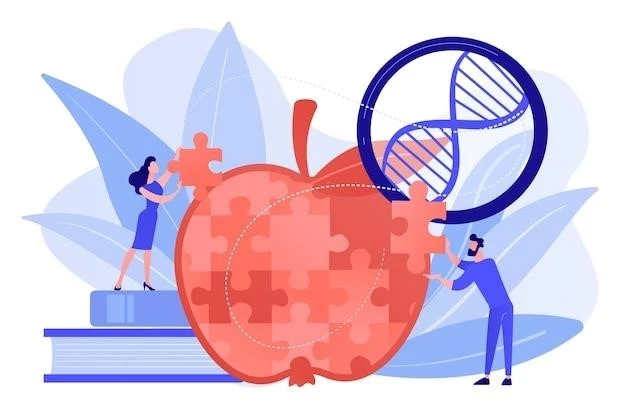Disease ౼ Ectrodactyly Dominant Form
Learn about Ectrodactyly‚ a genetic disorder causing limb malformation. Seek genetic counseling.
I. Understanding Ectrodactyly
Ectrodactyly is a congenital anomaly characterized by missing central digits in the hands or feet. This birth defect‚ also known as ″lobster claw″ deformity‚ is inherited as an autosomal dominant condition. Understanding the implications and management options for Ectrodactyly is crucial for individuals and families affected by this genetic disorder.
A. Definition and Overview
Ectrodactyly is a rare genetic disorder characterized by a malformation in the limbs‚ resulting in the absence of one or more central digits. Known as the ″lobster claw″ deformity‚ Ectrodactyly is inherited in an autosomal dominant pattern‚ requiring understanding and specialized care. Seek medical advice for appropriate management.
B. Types and Classification
Ectrodactyly presents in several forms‚ including isolated ectrodactyly and syndromic ectrodactyly‚ where additional anomalies are present. Classification is based on the severity and extent of limb malformations. Understanding the specific type of Ectrodactyly is crucial for tailored treatment approaches. Consult with healthcare professionals for accurate diagnosis and care.
II. Ectrodactyly as a Genetic Disorder
Understand that Ectrodactyly is an inherited condition‚ following an autosomal dominant pattern. This congenital anomaly results from genetic mutations affecting limb development. Genetic counseling plays a crucial role in understanding the risks‚ and implications of this disorder. Seek guidance from healthcare professionals and genetic counselors for comprehensive information and support.
A. Autosomal Dominant Inheritance
Ectrodactyly is passed down through generations in an autosomal dominant pattern‚ meaning an affected parent has a 50% chance of transmitting the condition to each child. Understanding the genetic basis of Ectrodactyly helps families make informed decisions regarding genetic counseling and family planning. Consult with genetic counselors to learn more about the hereditary aspects of this limb malformation.
B. Risk Factors and Causes
Ectrodactyly is primarily caused by genetic mutations during fetal development‚ leading to limb malformations. While the condition is mainly inherited in an autosomal dominant manner‚ spontaneous mutations can also occur. Understanding the genetic basis of Ectrodactyly and potential risk factors is essential for genetic counseling and appropriate management. Consult with healthcare providers for personalized guidance.
III. Recognizing Limb Malformation in Ectrodactyly
Ectrodactyly manifests as a distinct limb malformation‚ notably characterized by a ″lobster claw″ appearance due to missing central digits. Recognizing these physical symptoms is vital for early diagnosis and intervention. Consult with healthcare professionals to accurately identify and address Ectrodactyly-related limb anomalies. Early detection can lead to better treatment outcomes and quality of life.
A. Symptoms and Presentation
Ectrodactyly presents with visible limb abnormalities such as missing central digits‚ giving hands or feet a claw-like appearance. Individuals may experience challenges with gripping‚ walking‚ and fine motor skills due to the malformation. Recognizing these symptoms early allows for prompt evaluation and appropriate care. Consult with healthcare providers for a thorough assessment and personalized treatment plan.
B. Diagnosis and Testing
Diagnosing Ectrodactyly involves a thorough physical examination‚ imaging studies like X-rays‚ and genetic testing to confirm the condition and assess the extent of limb malformations. Early diagnosis is key to implementing appropriate interventions and support. Seek evaluation from healthcare professionals specializing in congenital anomalies to determine the best course of action for managing Ectrodactyly.
IV. Management of Ectrodactyly
Effective management of Ectrodactyly involves a multidisciplinary approach‚ including genetic counseling‚ physical therapy‚ and potential orthopedic surgery. Collaborate with hand surgeons and orthopedic specialists to explore treatment options tailored to individual needs. Engaging in appropriate care and rehabilitation can enhance function and quality of life for individuals with this congenital anomaly.
A. Treatment Options
Explore various treatment options for Ectrodactyly‚ including physical therapy to improve motor skills and hand function. Surgical interventions‚ such as reconstruction‚ may be considered for severe cases. Discuss with healthcare providers to create a personalized treatment plan that addresses specific needs and maximizes outcomes. Embracing a comprehensive approach can enhance overall well-being.
B. Role of Hand Surgeons
Hand surgeons play a critical role in the management of Ectrodactyly‚ specializing in surgical procedures to address limb malformations and improve hand function. Their expertise in reconstructive techniques can help enhance dexterity and aesthetics. Collaborate with hand surgeons to explore options for surgical interventions tailored to individual needs‚ promoting optimal outcomes and quality of life.
C. Potential for Orthopedic Surgery
Orthopedic surgery offers potential benefits for individuals with Ectrodactyly‚ addressing skeletal deformities and enhancing limb function. Consult with orthopedic surgeons specializing in limb anomalies to discuss the feasibility and outcomes of surgical interventions. By considering orthopedic procedures as part of the treatment plan‚ individuals can improve mobility‚ stability‚ and overall quality of life. Seek expert advice for personalized care.
V. Living with Ectrodactyly
Living with Ectrodactyly may present challenges‚ but with the right support‚ individuals can lead fulfilling lives. Embrace coping strategies‚ engage in physical therapy‚ and explore adaptive technologies to enhance daily activities. Seek guidance from healthcare professionals and support networks to navigate the emotional and physical aspects of Ectrodactyly. Remember‚ you are not alone in this journey.
A. Coping Strategies
Develop coping strategies to navigate the challenges of living with Ectrodactyly. Stay connected with support groups‚ practice self-care‚ and focus on strengths and abilities. Embrace a positive mindset and seek counseling if needed. Engaging in activities you enjoy and surrounding yourself with a supportive community can empower you to overcome obstacles and thrive despite the condition.
B. Physical Therapy and Rehabilitation
Engage in physical therapy to improve strength‚ dexterity‚ and coordination in affected limbs. Rehabilitation can enhance motor skills and functional abilities. Work closely with skilled therapists to develop personalized exercises and strategies to optimize physical functioning. Consistent therapy and rehabilitation efforts are essential for individuals with Ectrodactyly to enhance independence and quality of life.
VI. Genetic Counseling for Ectrodactyly
Genetic counseling is crucial for individuals and families affected by Ectrodactyly to understand the hereditary nature of the condition. Consult with genetic counselors to assess risks‚ explore family planning options‚ and gain insight into inherited conditions. By seeking genetic counseling‚ you can make informed decisions and access valuable support resources tailored to your unique genetic circumstances.
A. Importance of Genetic Counseling
Recognize the significance of genetic counseling in managing Ectrodactyly. Genetic counselors provide valuable information on inheritance patterns‚ risks‚ and family planning options. Understanding the genetic basis of Ectrodactyly empowers individuals to make informed decisions regarding their health and the well-being of future generations. Embrace genetic counseling as a vital resource for comprehensive care and support.
B. Understanding Inherited Conditions
Gain a deeper understanding of inherited conditions like Ectrodactyly to navigate its impact on individuals and families. Learn about genetic mechanisms‚ risks of transmission‚ and available support services. By educating yourself about inherited conditions‚ you can better comprehend genetic complexities and make informed choices regarding genetic testing‚ family planning‚ and accessing appropriate care. Seek knowledge to empower yourself and loved ones.
VII. Support Systems for Individuals with Ectrodactyly
Explore various support systems tailored to individuals with Ectrodactyly‚ including community resources and advocacy groups. These networks offer emotional support‚ shared experiences‚ and valuable information on managing the condition. By connecting with support systems‚ individuals can feel understood‚ empowered‚ and equipped with tools to navigate challenges associated with Ectrodactyly. Seek out these supportive communities for encouragement and solidarity.
A. Community Resources
Look into community resources available for individuals with Ectrodactyly. These resources encompass support groups‚ online forums‚ and local organizations offering guidance and a sense of belonging. Engaging with the Ectrodactyly community can provide emotional support‚ valuable insights‚ and opportunities for advocacy. Explore these resources to connect with others sharing similar experiences and to access information on coping strategies and available services.
B. Advocacy Groups and Networks
Get involved with advocacy groups and networks dedicated to supporting individuals with Ectrodactyly. These organizations offer resources‚ raise awareness‚ and promote inclusivity. By joining advocacy efforts‚ you can amplify your voice‚ access valuable information‚ and contribute to shaping policies that benefit the Ectrodactyly community. Collaborate with advocacy groups to foster acceptance‚ education‚ and positive change for individuals with this genetic condition.
VIII. Research and Advancements in Ectrodactyly Treatment
Stay informed about ongoing research and advancements in the treatment of Ectrodactyly. Current studies focus on innovative surgical techniques‚ genetic therapies‚ and prosthetic developments to enhance outcomes for affected individuals. By tracking progress in Ectrodactyly treatment‚ you can explore emerging options‚ participate in clinical trials‚ and potentially benefit from cutting-edge interventions. Keep abreast of research findings to make informed decisions about your care.
A. Current Studies and Findings
Stay updated on the latest studies and findings related to Ectrodactyly. Researchers are exploring genetic mutations‚ limb development‚ and potential treatments; Engaging with current research can provide insights into emerging therapies and interventions. Consider participating in research studies to contribute to scientific knowledge and access cutting-edge solutions. By staying informed‚ you can play an active role in advancing Ectrodactyly treatment.

B. Future Directions in Managing the Condition
Explore future directions in managing Ectrodactyly‚ including potential advancements in genetic therapies‚ prosthetic developments‚ and personalized treatment approaches. Stay informed about upcoming research initiatives and technological innovations aimed at improving outcomes for individuals with this condition. Embrace the evolving landscape of Ectrodactyly management to enhance quality of life and functional abilities. Keep an eye on promising developments to make empowered decisions about your care.
IX. Conclusion
In conclusion‚ Ectrodactyly‚ a genetic disorder causing limb malformation‚ requires a multidisciplinary approach for management. By embracing genetic counseling‚ exploring treatment options‚ and engaging with support systems‚ individuals can navigate the challenges of Ectrodactyly effectively. Stay informed about advancements and connect with advocacy groups for ongoing support and empowerment. Remember‚ with proactive care and a positive mindset‚ individuals with Ectrodactyly can lead fulfilling lives.
A. Summary of Key Points
Key takeaways about Ectrodactyly include its genetic nature with autosomal dominant inheritance‚ limb malformation symptoms‚ and the importance of genetic counseling. Treatment involves physical therapy‚ possible orthopedic surgery‚ and collaboration with hand surgeons. Addressing the condition holistically‚ including coping strategies and community support‚ is vital. Stay informed about research advancements and foster hope for future Ectrodactyly management.
B. Encouragement for Individuals and Families Facing Ectrodactyly
For individuals and families dealing with Ectrodactyly‚ know that you are not alone in this journey. Embrace your uniqueness‚ seek support from community resources‚ and advocate for yourself. Stay informed about treatment options‚ participate in research‚ and maintain a positive mindset. By focusing on strengths‚ accessing available resources‚ and fostering resilience‚ you can navigate the challenges of Ectrodactyly with courage and hope.
